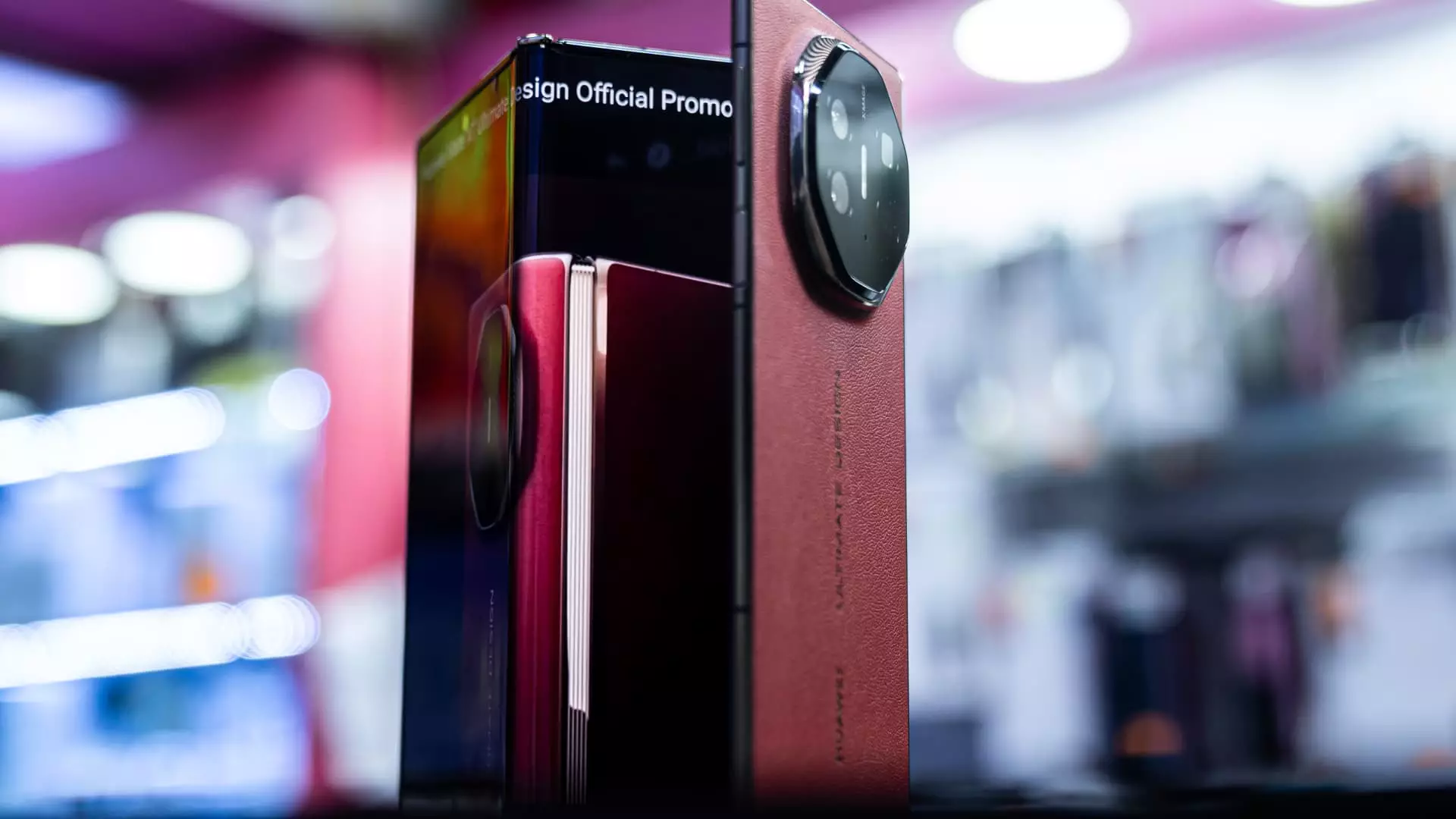On Monday, Huawei announced a staggering 22.4% rise in its revenue for 2024, amounting to an impressive 862.1 billion Chinese yuan (around $118.2 billion). This marks the tech behemoth’s second-highest revenue figure ever, trailing only behind the record set in 2020. What makes this leap even more intriguing is the context behind it; while total revenues have soared, net profits have hit a wall, plummeting by 28% compared to the previous year. In a world where profitability remains paramount, this discrepancy is a clear indicator of the internal and external pressures that Huawei faces, particularly amid the ongoing storm of U.S. sanctions.
A Double-Edged Sword: Investments vs. Profits
Huawei’s financial report underscores a complex reality for the company. It is evident that the aggressive investments in research and development have come at a price. The company dedicated a staggering 179.7 billion yuan—20.8% of its revenue—to R&D in 2024, a figure surpassing last year’s investments. While the intention behind this is commendable—seeking to innovate and diversify in sectors like AI, cloud computing, and automotive technology—it raises critical questions about the sustainability of such a strategy, especially in the face of dwindling net profits.
Meng Wanzhou, Huawei’s rotating chairwoman, noted that the company united to tackle multiple external challenges while improving operations. However, these efforts do not negate the fact that the company is grappling with a stark reality: it must walk the tightrope between innovation and profitability in an increasingly competitive global landscape. The impressive growth numbers in revenue could mask a deeper issue; are these investments truly driving sustainable growth, or are they merely a band-aid on a larger wound?
Coping with U.S. Sanctions
The specter of U.S. sanctions looms large over Huawei, constraining its access to critical technologies such as semiconductors. This has forced the company to pivot dramatically, striving for innovation in areas that the sanctions have not yet stifled. While Meng expresses optimism about tackling challenges, one cannot ignore the lingering question of how effective these strategies will be in regaining a foothold in global markets. Huawei has demonstrated resilience; however, the viability of its progress will ultimately depend on its ability to navigate the geopolitics of technology.
Despite the restrictions, Huawei’s growth in the consumer sector has raised eyebrows. The company has made significant strides to rebound from the crippling effects of sanctions. With the launch of its next-generation smartphones—highlighted by the innovative trifold device—Huawei’s consumer sales surged by an astounding 38.3% to 339 billion yuan. Yet, this resurgence begs the question: Is this growth built on a solid foundation, or is it a temporary blip in an otherwise turbulent landscape?
Exploring New Frontiers
The diversification strategy being employed by Huawei is both ambitious and necessary. The digital power sector, focusing on energy infrastructure, saw a remarkable 24.4% revenue boost, while cloud computing revenue climbed by 8.5%. These figures underscore a key shift in the company’s strategy; they are pushing into areas that are receiving growing global attention amid climate change and the push for sustainable technologies. The challenge remains, however, in establishing Huawei as a trusted name in these new domains, especially outside China.
Additionally, the booming revenue reported in Huawei’s Intelligent Automotive Solution division is nothing short of remarkable—an eye-popping 474.4% year-on-year rise. As the world leans into electrification and smart mobility, Huawei’s venture into this sector seems prescient. But again, can this growth be sustained? Will Huawei be able to fully capitalize on global automotive partnerships while simultaneously pushing through a barrage of sanctions?
The Road Ahead: A Balancing Act
Huawei stands at a crossroads, trapped between an impressive revenue booster and the shadow of declining net profits. As they embark on new initiatives while grappling with external constraints, the overarching sentiment is one of cautious optimism intermingled with relentless uncertainty. The company’s future trajectory will undoubtedly depend on its ability to not only innovate but also to cultivate a sustainable business model that can weather geopolitical storms. As they navigate this intricate landscape, one can only hope that Huawei’s ambitious pursuits won’t become a costly mirage in the desert of tech competition.

